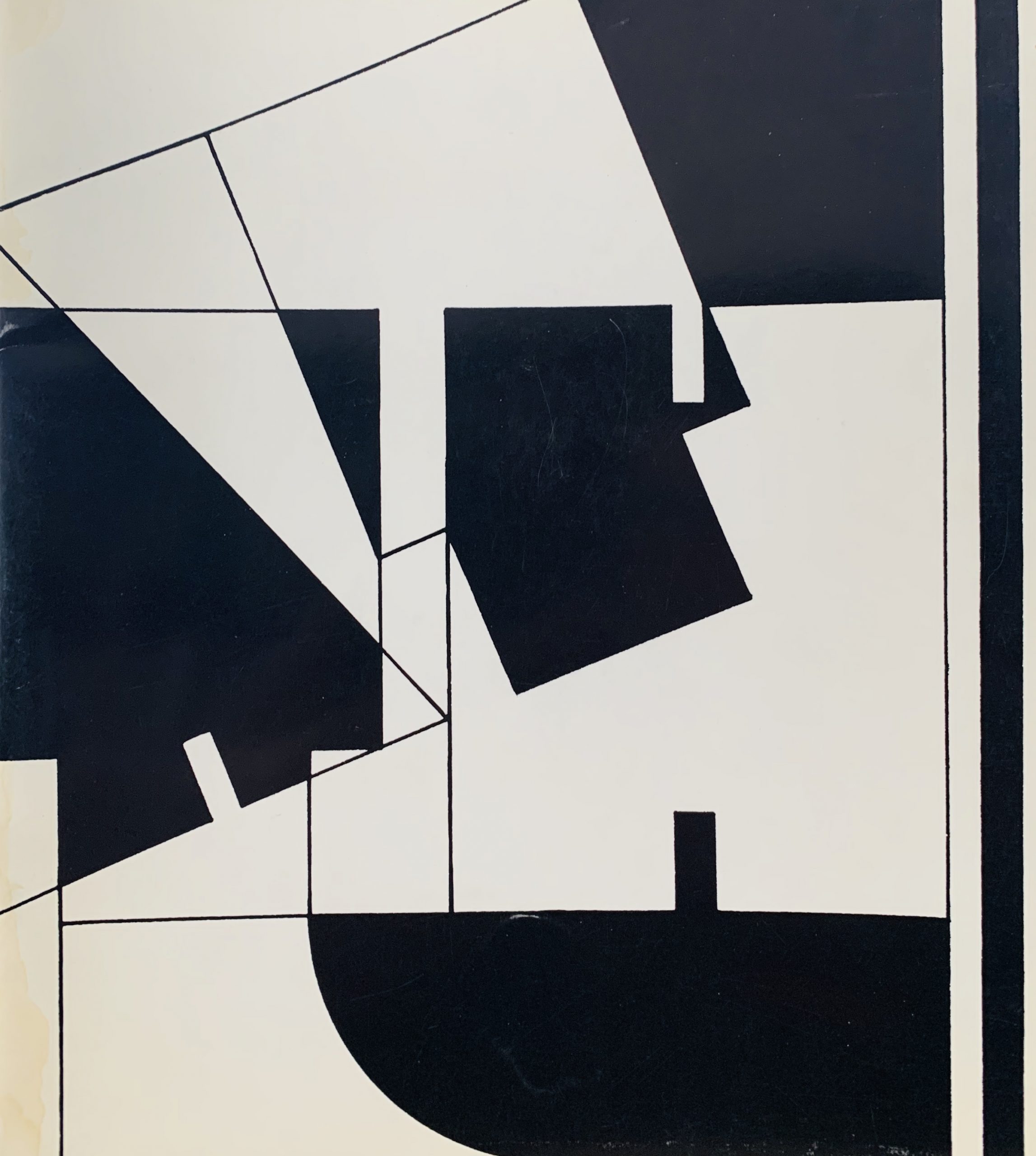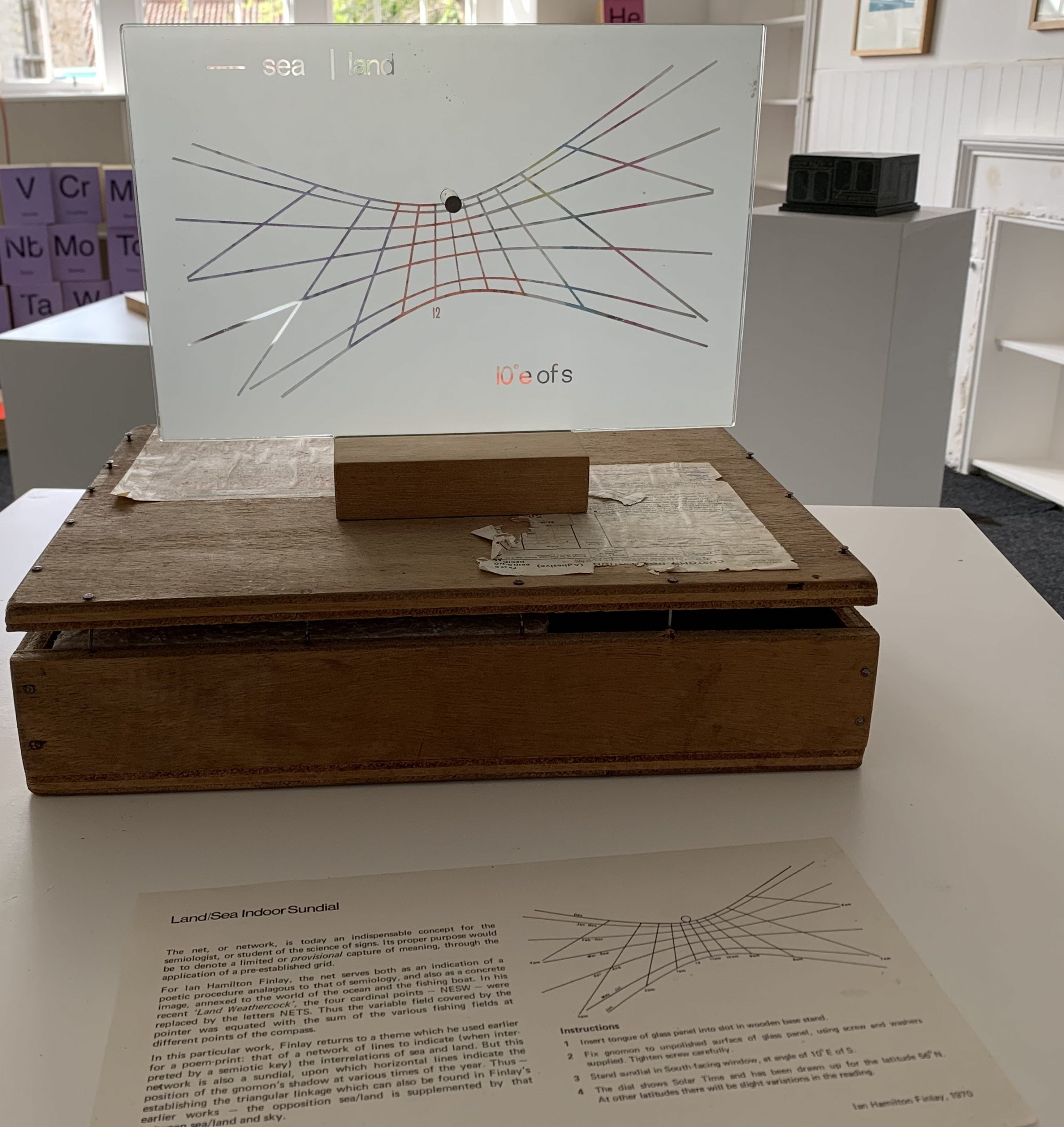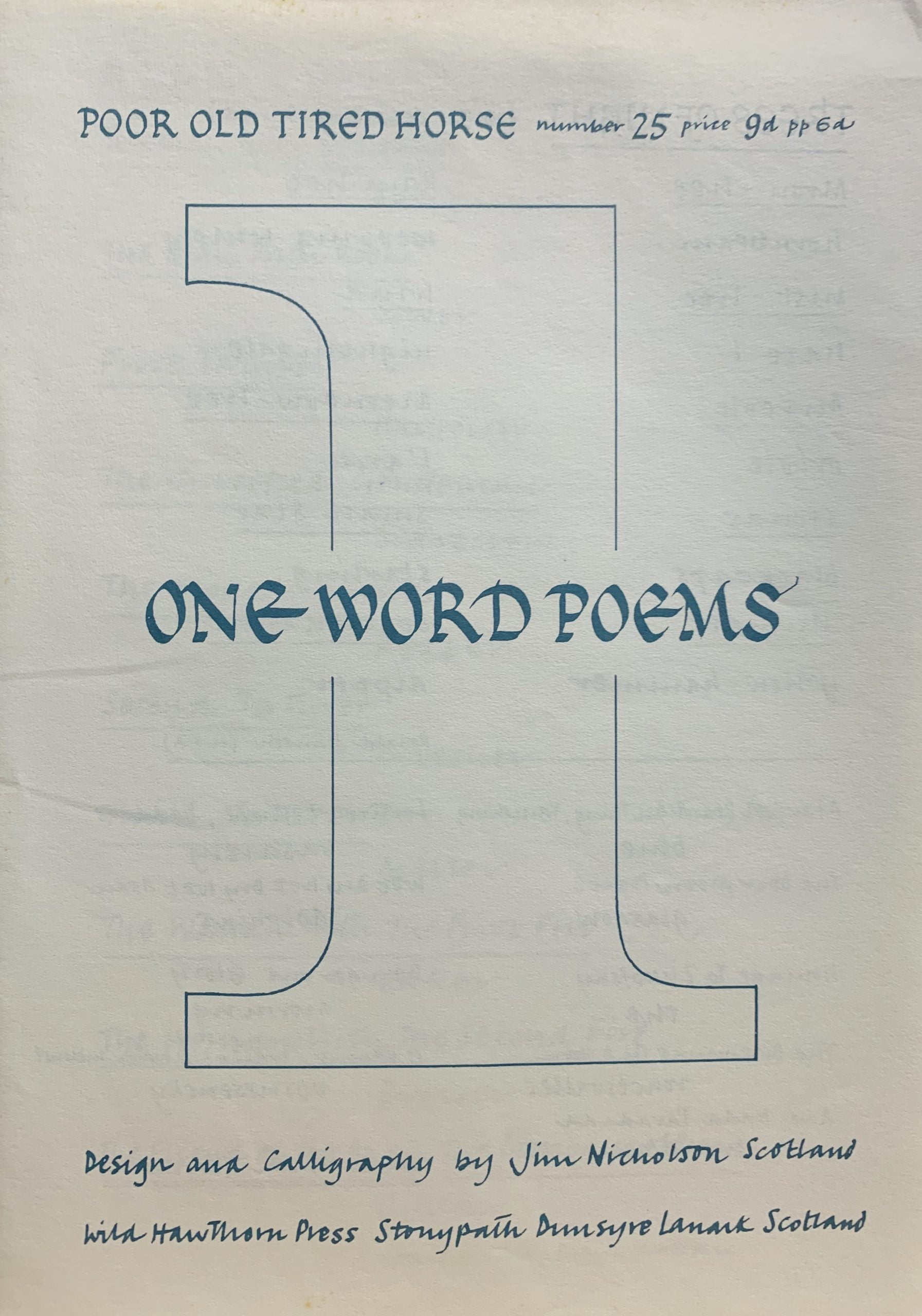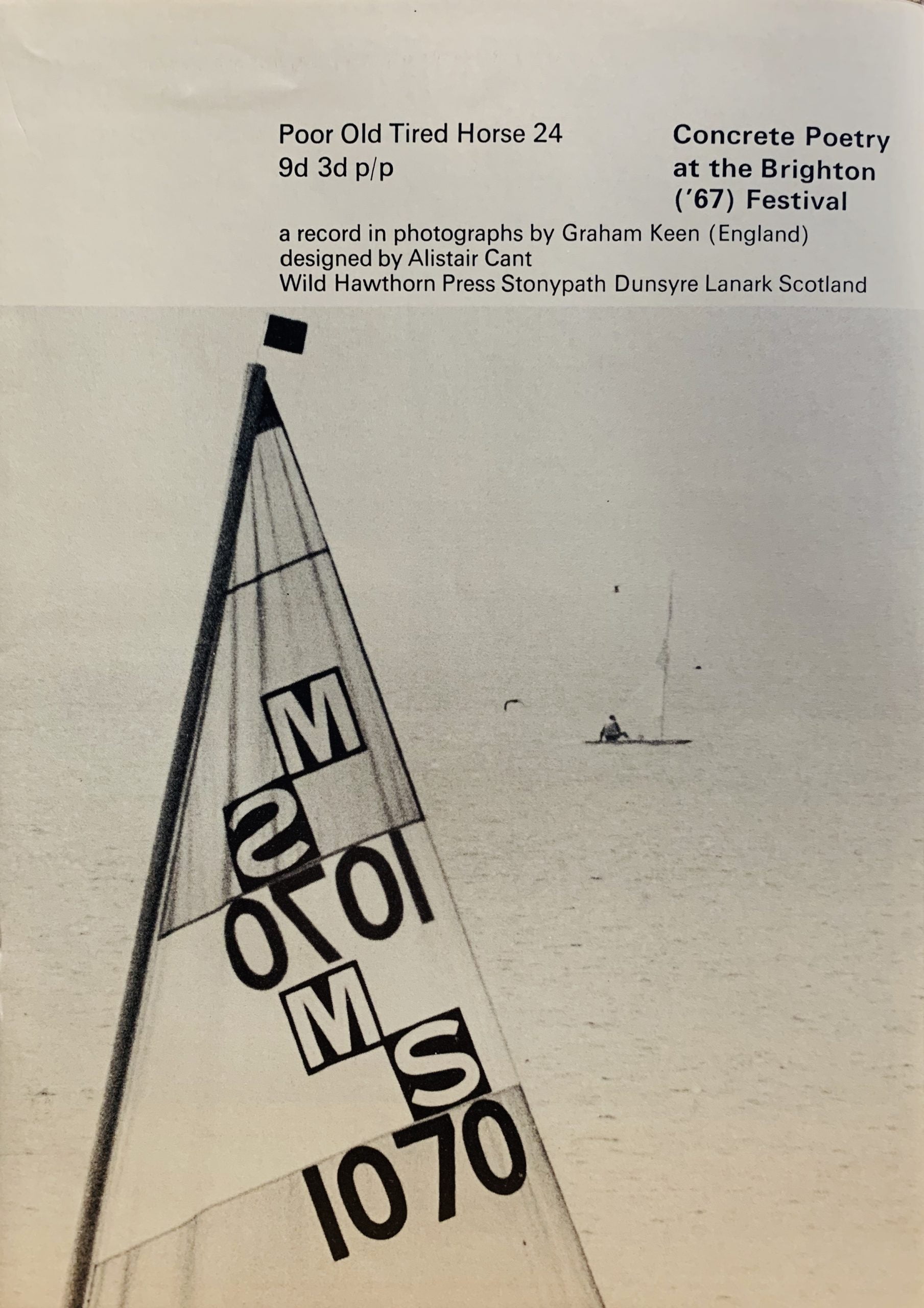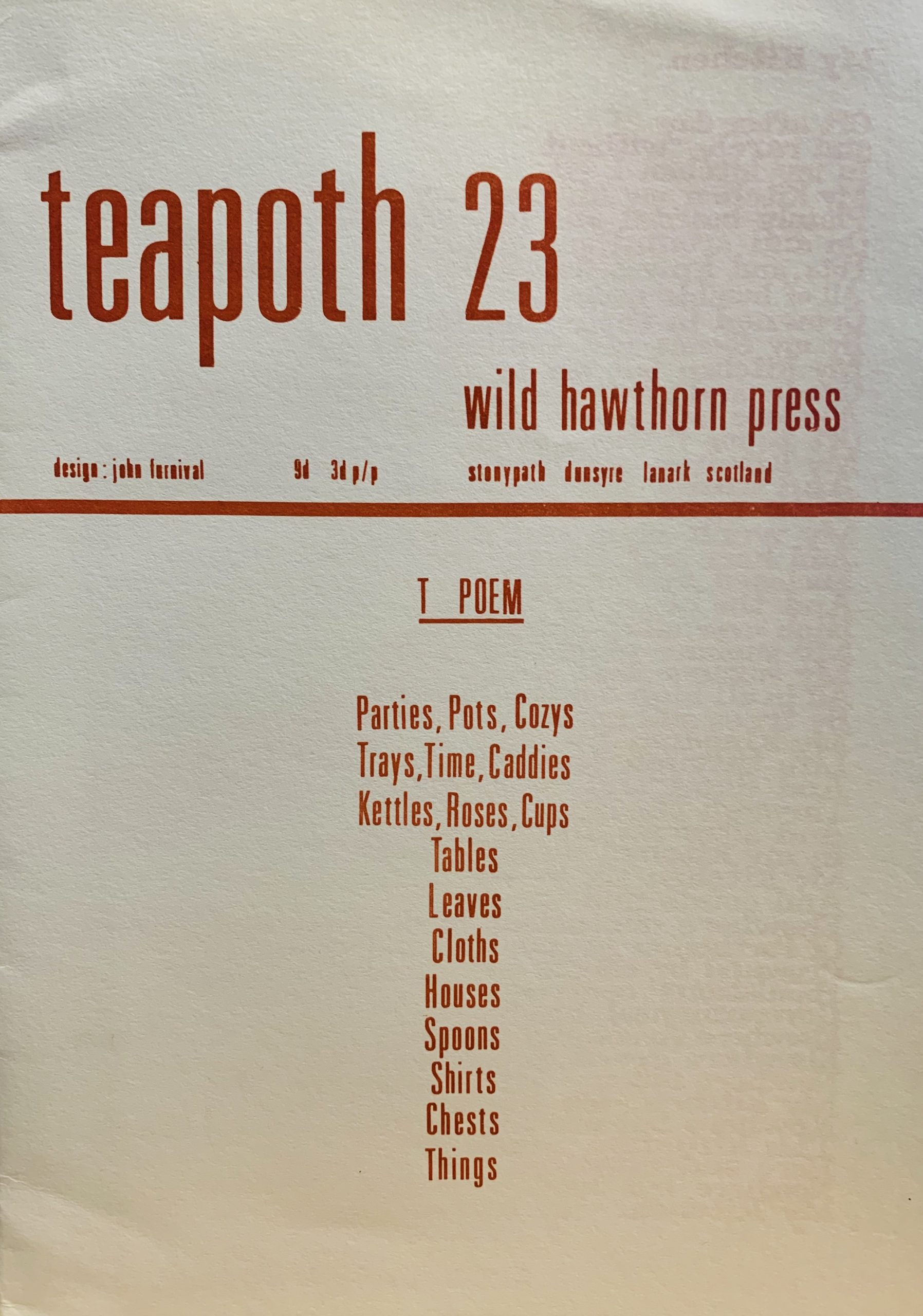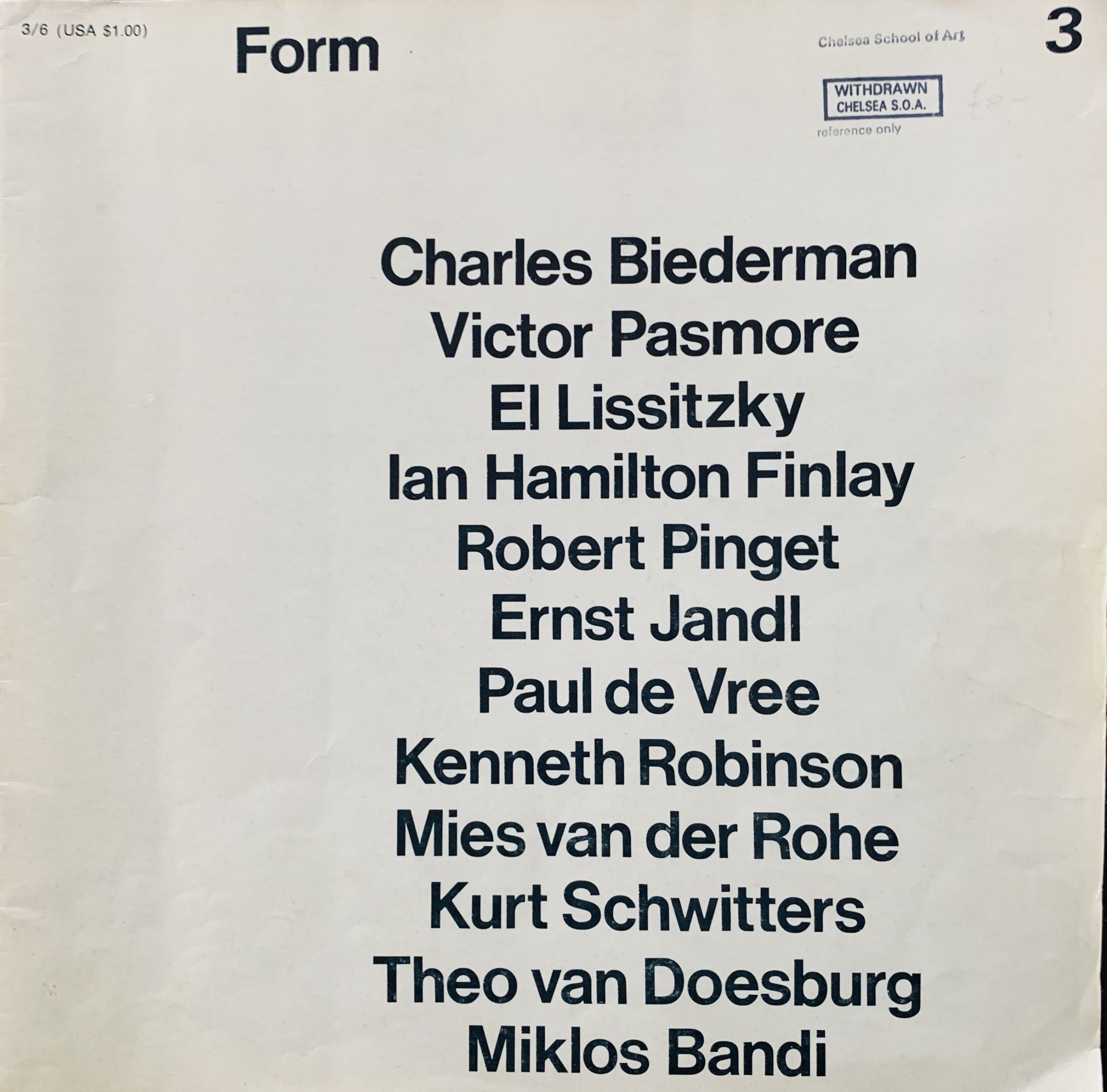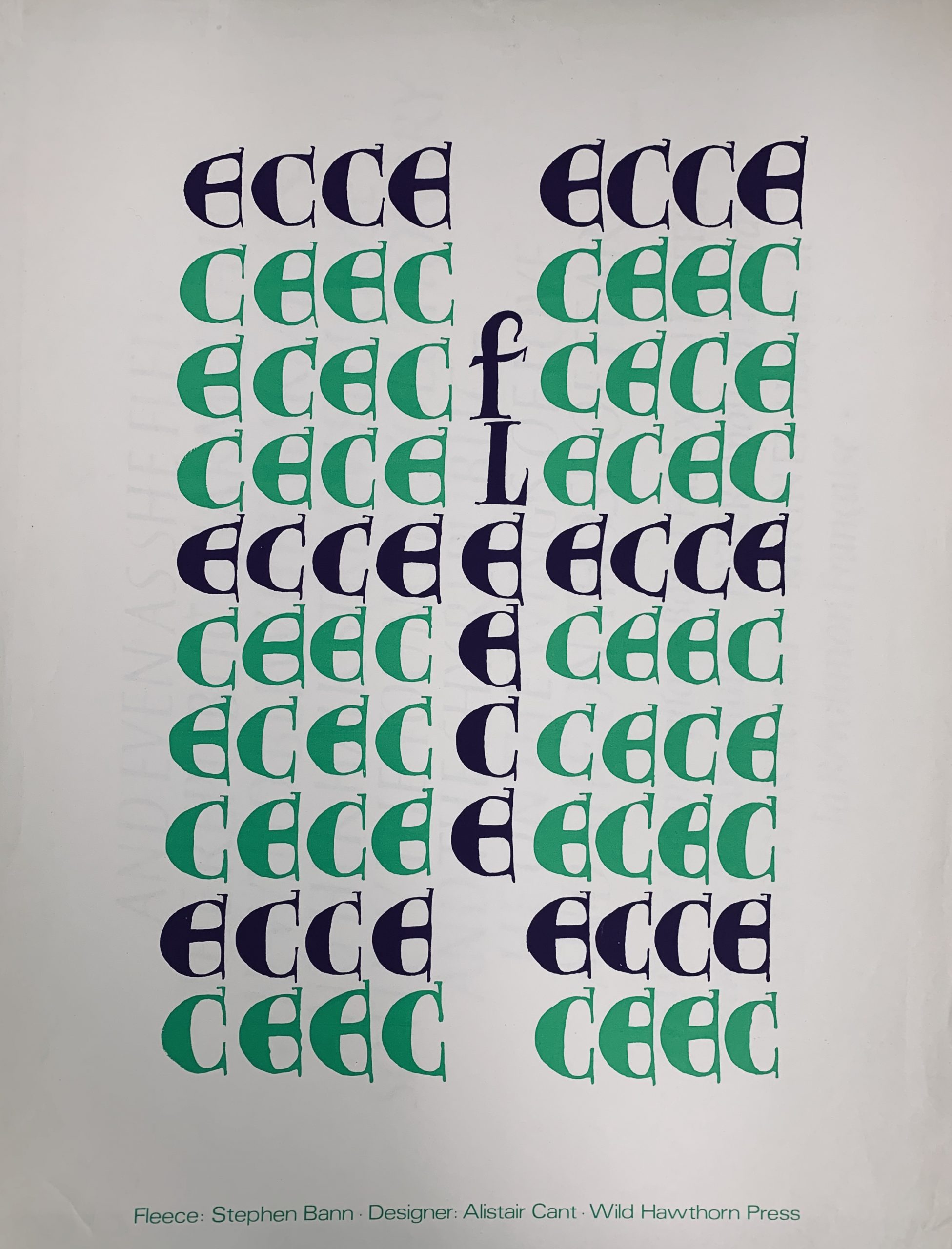Stoneypath; Wild Hawthorne Press, 1967
26 x 21cm, 8pp. The final number of Finlay’s poetry publication. Design and calligraphy by Jim Nicholson. Contributions from Ronald Johnson, Edwin Morgan, George Mackay Brown, Eli Siegel, Jerome Rothenberg, Alkman (translated by Guy Davenport), Hugh Creighton Hill, Stuart Mills, Pedro Xista, Alan Riddell, Martin Seymour-Smith, Kenelm Cox, Giles Gordon, Douglas Young, Edward Lucie-Smith, Stephen Bann, Dick Sheeler, Astrid Gillis, Oswald de Andrade, Ernst Jandl, Gael Turnbull, Aram Saroyan, Jonathan Williams and Ian Hamilton Finlay. VG+.
Finlay whilst not inventing the One Word Poem format certainly helped popularise it - he uses the format in a number of his artist's books. The last poems in this publication are by Finlay and include some of his best known works reformatted in to such a form.
A SEE-SAW
_________
SEA
...

